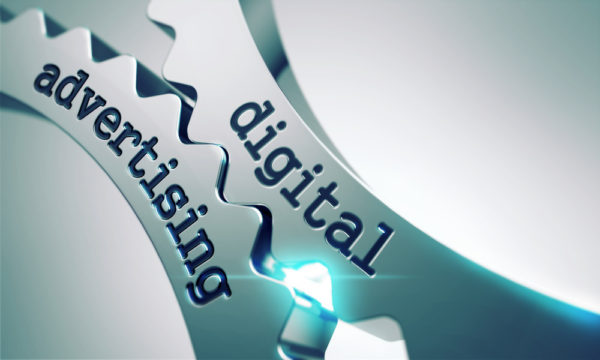Display advertising has long been the driving financial force behind the Internet. Ads pay for the consumer’s seemingly endless appetite for the content they consume each day. The market forces created by profit margins and the ever increasing power of market leverage are staggering. Together, they have driven advertisers to peruse an ever-evolving set of techniques and technologies to grasp either the user’s attention or information.
A growing opinion amongst users is that internet advertising is out of control. It occupies too much space, data, time, and invades too far into our privacy. Users have now been given the opportunity to block most of the advertisements that fill their screens. A critical problem created by blocking all of those advertisements is that ‘no ads equal no cash flow.’ With this new shift in power, who will pay for the web? How will the current economic model of the internet survive?
At the heart of the issue lies the following dichotomy: while practically everyone wants free access to almost all internet content, they want to yield profits from their own internet endeavors. They don’t want to have to pay, however, they do want a pay-day. No matter how you cut it – there is no free lunch. If you are on the internet, you are paying a price to someone.
With this cost in mind, several questions come to mind. What is a just and equitable compensation for ‘free access’ to content? At that point of full and just compensation, do the data harvesting and advertising behaviors of the advertisers change accordingly?
There is no question the internet is a capitalistic environment. Publishers should be compensated for their efforts and content. The question then becomes ‘what is a reasonable price for their product?’ Should users be given a price or simply subjected to endless mining of their resources and data simply in exchange for access to content? These questions have established a blurry synergy established between the users and providers. How many advertisements are enough? At which point has the consumer fairly compensated the publisher for the content they have consumed? When has enough data been mined?
In the past few years, a growing debate has given rise to the concerns of excess. It is virtually impossible to access any online platform without being, for the lack of a better description, attacked by advertising or silently data-mined. The scary part of the equation is that while consumers are aware of the advertisements that are flashed endlessly in front of their face, they have no clue as to the nature, amount, or depth of the data about that is silently harvested behind the screen.
Bluntly, this is the price of doing business. If you access the internet, you will pay the piper.
There is a growing backlash over the increasingly invasive nature of net advertising. At the forefront of this battle are two corporate giants – Apple and Google. One corporation has built their business model upon the mining of data, the funds generated through online advertising, and content management. The other has provided the consumer with the ability to limit the access of that reach.
The recent release of Apples’ iOS 9 and OS X operating systems include “content-blocking extensions” (AKA “ad-blocking software”). If users can now effectively remove advertisements from the ‘free web’ who will pay the bills?
This clash of titans was eloquently described in a recent posting. I’ve posted an excerpt from it here:
“The central philosophical dispute over ad-blocking goes something like this: Publishers have no right to force readers to be exposed to certain kinds of ads or allow numerous third parties to collect their information without a prior agreement; readers have no right to read or view content that they don’t pay for in one form or another, be it with money or data. What is not in dispute is that if ad-blocking becomes ubiquitous (and there’s nearly every reason to think that it will be!) it will be devastating for publications who derive much or all of their revenue from advertising—which comprises most of the professional publications on the internet. When Murphy first posted about “an hour with Safari Content Blocker in iOS 9,” he asked, rhetorically, “Do I care more about my privacy, time, device battery life & data usage or do I care more about the content creators of sites I visit to be able to monetise effectively and ultimately keep creating content? Tough question. At the moment, I don’t know.” (With the impending release of Crystal, it seems he’s resolved that tension.) When I spoke with Chris Aljoudi, lead developer on uBlock, an extension that tells users how many third-party scripts are active on a webpage, and asked how sites should sustain themselves if all of their ads are blocked, he replied, “I’m not an expert on whether it’s a business model, I don’t think we need to know as developers of a tool like this.” Even if they don’t have solutions, “users need to be able to control what they are forced to come across,” Aljoudi said, using the example of nytimes.com, a website for which no known mandate of visitation exists. – Casey Johnson writing for theawl.com
In order to provide “free access” to content, publishers rely upon heavily inserting code scripts that too often invade users space, take control of the window, or harvest an unknown amount about data about the user. Providers do this to pay the bills. A broader question for everyone is ‘how and when can equity be found for all parties at the table?’
At Colure, we are well aware of this consternation and provide a balanced approach to advertising:
The way we differ from our competitors is that we help our clients with a balanced advertising portfolio. Within this picture, display or PPC advertisements would only be a single component of the greater picture. We also recommend SEO, app store optimization, blogging, syndicated or sponsored blogging with influencers. Digital PR is critical; let us not forget our recommendations for social media with content management. At the end of the day, we move forward to find a proper, working balance between the needs of our clients and those of the public.
Communications with your client and their customer base is an ever evolving game of chess. If you would like to discuss your project needs, contact our project managers.
















![Advertising Budgets 2016: 4 Trends You Need To Know [Infographic]](https://www.mdgadvertising.com/blog/wp-content/uploads/2015/09/2016_Advertising_Trends_1000_compressed.jpg)










